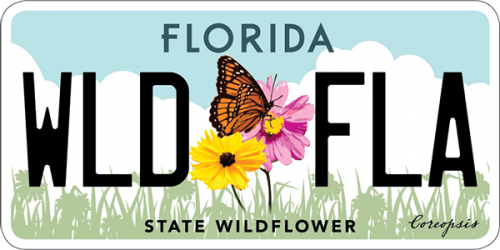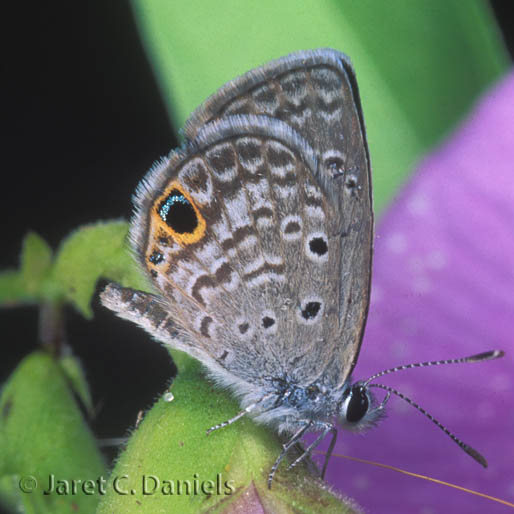- Family name: Lycaenidae/Gossamer Wings
- General description: male violet blue with white fringes and small black spot along outer hindwing margin. Female brown with blue scaling limited to wing bases and small black spot along outer hindwing margin. Ventral hindwing gray with darker bands, two black spots along leading margin, a narrow (often faint) white postmedian band, and a single orange-rimmed black eyespot along outer margin.
- Field Marks: small; ventral hindwing with two black spots along leading margin and a single orange-rimmed black eyespot along outer margin.
- Sexes: appear different
- Wingspan: 18-25 mm
- Life Cycle: Egg: blue-green, flattened, laid singly on host flower buds Mature larva: variable; green to red with pink markings Chrysalis: green
- Number of Generations: 3 or more per year
- Flight Season: All
- Abundance: Common
- Habitat: old fields, disturbed sites, roadsides
- Larval Host Plants: hairy indigo (Indigofera hirsuta), creeping indigo (Indigofera spicata), partridge pea (Cassia fasciculata),
- Similar Species: Cassius Blue
- Additional Information: Regularly expands range into northern portions of Florida; adults flutter very low to the ground.
- Range in Florida
 The Florida Wildflowers & Butterflies projects at the Florida Museum are sponsored in part by the State of Florida and the Florida Wildflower Foundation, Inc.
The Florida Wildflowers & Butterflies projects at the Florida Museum are sponsored in part by the State of Florida and the Florida Wildflower Foundation, Inc.
